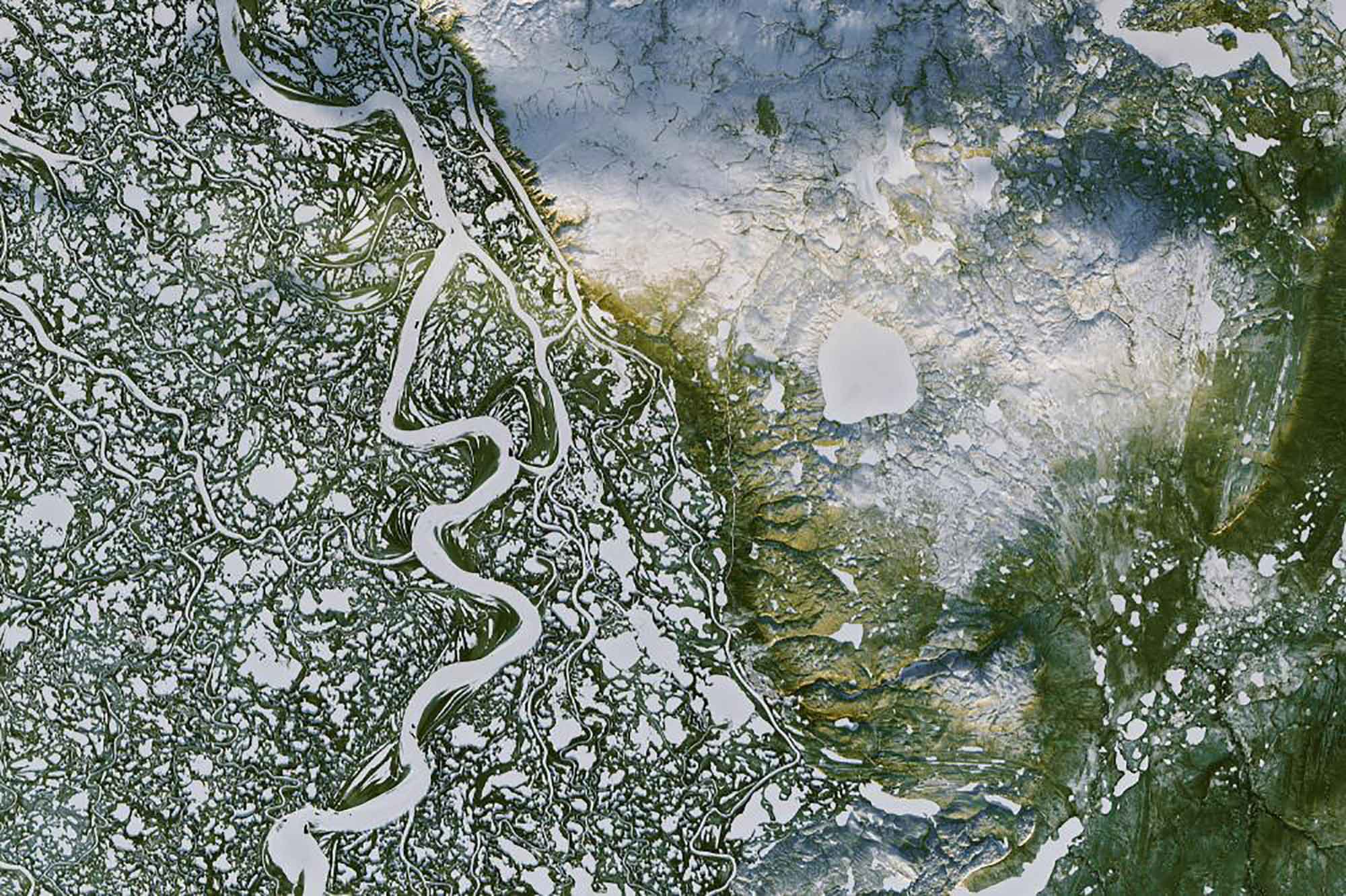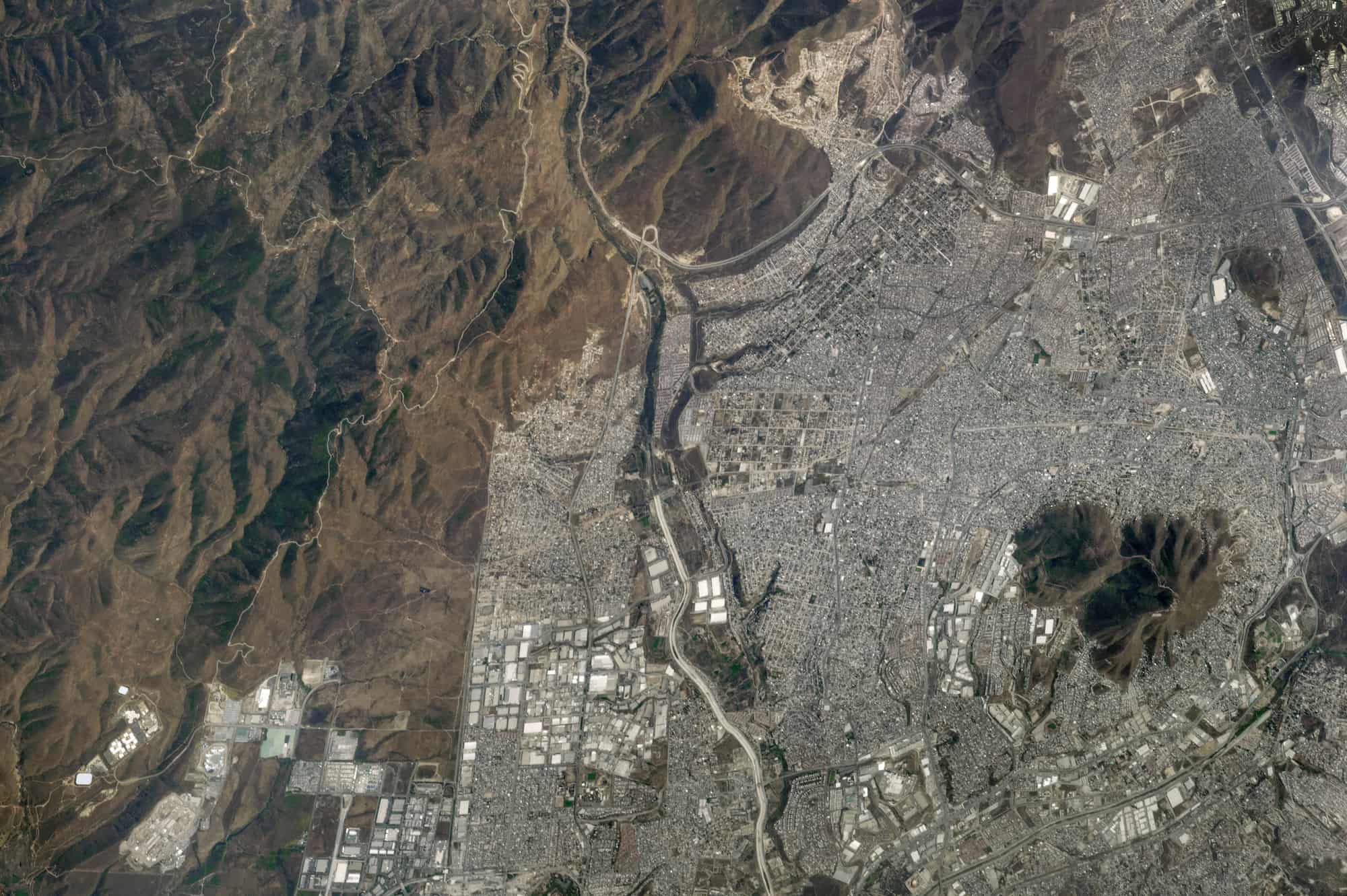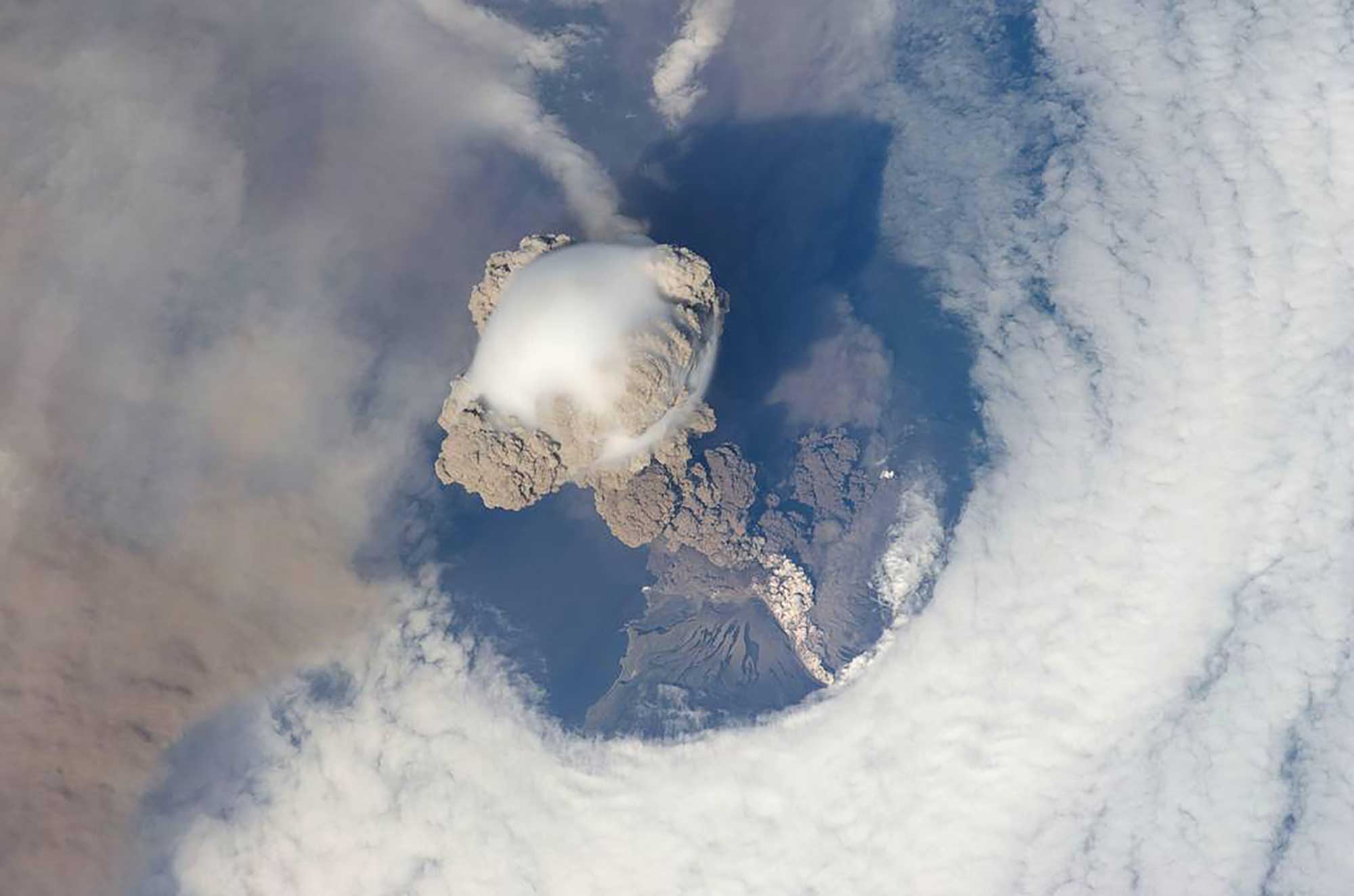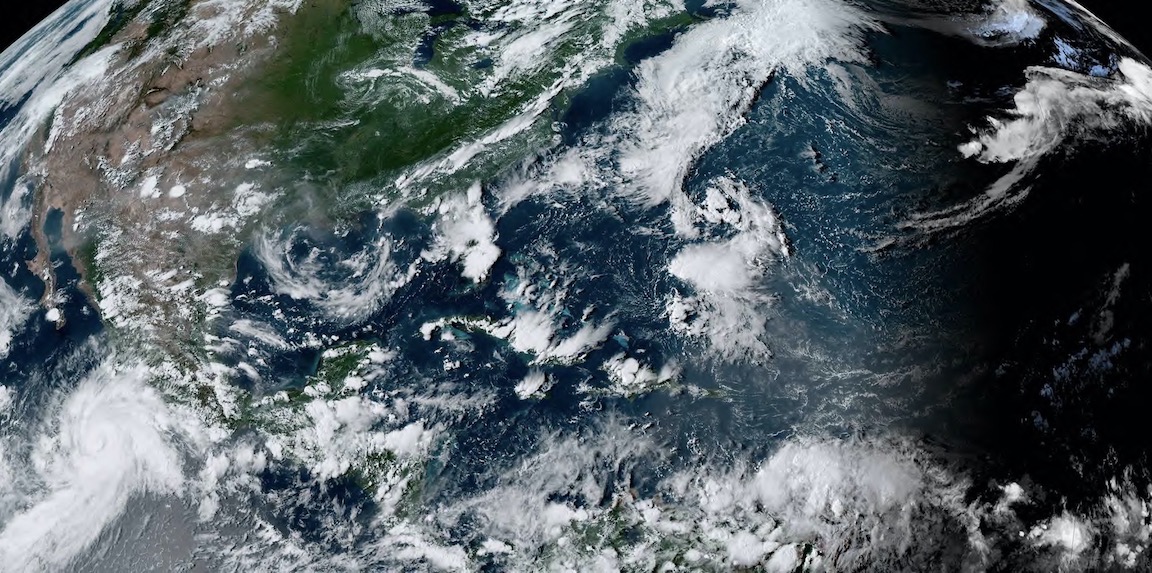Credits
Don Haas with Sarah Miller (largely extracted, with some updates, from the Teacher-Friendly Guides to the Earth Science series, published by the Paleontological Research Institution).
Last updated August 17, 2020.
Overview
Like all scientific disciplines, the Earth sciences continually evolve over time. New discoveries fuel new ideas, providing an ever-increasing understanding of the planet. But of the overwhelming number of observations, theories, and principles that form the foundation of Earth system science, what is essential for every American to understand? All too often, Earth science courses are too ambitious in the sheer number of ideas and, as a result, may fail to cover topics in any substantial depth.
An alternative approach is to build one's understanding upon a foundation of focused, interconnected big ideas. A well-designed set of big ideas can provide an all-encompassing conceptual framework for any discipline, including Earth system science. Developed alongside scientists and Earth science teachers, this coherent set of big ideas illuminates what is fundamental to the Earth sciences:
1. The Earth is a system of systems.
2. The flow of energy drives the cycling of matter.
3. Life, including human life, influences and is influenced by the environment.
4. Physical and chemical principles are unchanging and drive both gradual and rapid changes in the Earth system.
5. To understand (deep) time and the scale of space, models and maps are necessary.
These ideas are designed to cover the breadth of any Earth science curriculum, but they must be dissected to build deep understanding. Each idea is essentially bottomless; that is, while a meaningful understanding of these ideas is readily attainable, the details contained within are endless. Each of the ideas can be understood, but the depth of understanding can vary greatly. Introduction of these ideas also invites discussion of the nature of science. As curricula are designed and implemented, the traditional topics of Earth system science should be complemented with ideas on how we have come to know what we know about the natural world. Within our big ideas framework, we draw attention to the nature of science with two overarching questions:
1. How do we know what we know?
2. How does what we know inform our decision making?
These questions, when addressed in concert with the big ideas, provide a gateway into the nature and utility of the range of scientific ideas.
Big Idea 1: The Earth is a System of Systems
The Earth is composed of many systems, which cycle and interact in both space and time. It is also part of a multitude of systems, nested in larger systems such as the solar system and the universe. Systems are composed of an untold number of interacting parts that follow simple rules; they can and do evolve.
For example, outlining the geologic history of any region demonstrates the concept of the Earth as a system of systems. Plate tectonics drives the formation of mountains. Subsequent weathering and erosion of the uplifted mountains leads to the formation of deltas in adjacent shallow seas. And with uplifted continents, shorelines change and the distribution of marine communities are altered.
The planet’s systems are intimately connected: the forces of one system affect other systems nested within it. As plates collide, systems that drive plate tectonics are obviously linked to the formation of mountains, but they are ultimately linked to and influence much smaller systems and a wide range of landscape types, not just mountains. The intense heat and pressure resulting from collisions can lead to the metamorphism of existing strata, or it can melt existing rocks to later form igneous rocks.
Plates do not simply slide across Earth’s surface. Mountains and plateaus rise and fall, rifts open, and basins form. The interplay of climate, rock, and water has shaped every natural landscape on the planet. Humans and other living things build upon (or tear down) the foundations lain down by these other systems, furthering their interplay.

Satellite image of the Mackenzie River Delta in the Northwest Territories of Canada. Image by NASA (public domain).
Big Idea 2: The Flow of Energy Drives the Cycling of Matter
The Earth is an open system. Energy flows and cycles through the system; matter cycles within it. This cycling is largely driven by the interaction of the differential distribution of solar radiation and internal heat: the constant flow of solar radiation powers much of Earth's ocean and atmospheric processes on the surface of the system, while the flow of heat from radioactivity within the Earth drives plate tectonics.
One of the fundamental processes known to Earth system scientists is the rock cycle. The rock cycle illustrates the steps involved in the formation of one type of rock from another. It is a system that has operated since the Earth's origin, and it continues today. The energy that drives weathering and erosion, melting, or an increase in heat or pressure, drives the continuation of the rock cycle.

A thunderstorm featuring a large shelf cloud, photographed in July 2005 on the Swedish island of Öland in the Baltic Sea. Photograph by Arnold Paul (Wikimedia Commons; Creative Commons Attribution-Share Alike 2.5 Generic license).
Big Idea 3: Life, Including Human Life, Influences and is Influenced by the Environment
Across its four-billion-year history, the course of life's evolution has been intimately tied to the Earth’s physical environment. Global cooling led to the relatively recent spread of grasslands, which then triggered an evolutionary shift in many herbivorous mammals from browsing to grazing. Conversely, the evolution of life has altered the physical environment. Photosynthetic bacteria released free oxygen into the early oceans and atmosphere, making Earth habitable for later types of organisms. Humans, with their increasing population and expanding technology, have altered the landscape and the distribution of flora and fauna, and they are changing atmospheric chemistry in ways that affect the climate. Earth system processes also influence where and how humans live.
With human populations increasing the world over, the emission of greenhouse gases has also increased dramatically. These gases alter the chemical composition of the atmosphere and directly influence the planet’s climate. It is generally agreed that the rapid and immense pouring of carbon dioxide into the atmosphere is driving global warming, which is having have incredible impacts throughout the world.
Another example: Around three million years ago, a land bridge formed between North and South America. For the first time in more than 150 million years, the two continents were linked, and the mammals inhabiting both lands migrated across the bridge. Horses, mastodons, cats, and dogs moved south, while opossums, porcupines, ground sloths, and armadillos moved north (to name a few). Today, half the mammal species in South America are descended from North American migrants.

An astronaut aboard the International Space Station (ISS) took this photograph of the eastern parts of Tijuana, located in the Mexican state of Baja California about 20 kilometers (12 miles) inland from the Pacific Ocean (public domain).
Big Idea 4: Physical and Chemical Principles are Unchanging and Drive Both Gradual and Rapid Changes in the Earth System
The Earth processes operating today—everything from local erosion to plate tectonics—are the same as those operating since they first arose in Earth's history, and these processes are obedient to the laws of chemistry and physics. While the processes that constantly change the planet are essentially fixed, their rates are not. Tipping points are reached that can result in rapid changes cascading through Earth systems.
During the Precambrian, the evolution of photosynthetic organisms led to significant changes in the planet’s atmosphere. Prior to this event, there was little free oxygen in the atmosphere, but with photosynthesis producing oxygen as a waste product, the very existence of these organisms flooded the seas and atmosphere with free oxygen, changing the planet forever. But life’s evolution represents just one of the processes working upon Earth systems.
Tectonic processes have been at work in the same way for billions of years, opening and closing oceans and building up and tearing down landscapes. The folded mountains that stand in the eastern US are markers of past continental collisions, and the apparent continuation of those mountains in Europe are testaments to the separation of the supercontinents formed during those collisions.

On June 12, 2009, the International Space Station passed above the Sarychev Volcano as it erupted. The processes that drive volcanism and plate tectonics have been at work on Earth for billions of years. Photograph by NASA (public domain).
Big Idea 5: To Understand (Deep) Time and the Scale of Space, Models and Maps are Necessary
The use of models is fundamental to all of the Earth sciences. Maps and models aid in the understanding of aspects of the Earth system that are too big or small for direct observation, or where observation is not possible. They also help make complex systems comprehensible through strategic simplification. When compared to the size and age of the universe, humanity is a speck in space and a blip in time; models assist in the comprehension of time and space at both sub-microscopic and immense scales.
Much of scientists' understanding of the inner workings of our planet is derived from mathematical modeling. It is not possible to directly measure the movement that occurs below Earth's surface, but modeling of convection currents brings us closer to the true nature of these monumental geologic phenomena.
The observation of natural phenomena today, such as deposition along a riverbed, is critical for interpreting the geologic record. But for processes that operate on much larger, slower scales, modeling within the lab is required. The formation of mountain ranges such as the Appalachian Mountains or Rocky Mountains is better understood by examining the effects of stress and strain in the laboratory.

The North America Tapestry of Time and Terrain by Kate E. Barton, David G. Howell, José F. Vigil (1:8,000,000 scale) (modified from original). This map was prepared by the United States Geological Survey in collaboration with the Geological Survey of Canada and the Mexican Consejo Recursos de Minerales (public domain).
Summary
Taken individually, these big ideas and overarching questions represent important aspects of Earth system science, but together they are more significant. Keeping these ideas in mind—and considering how they arose through scientific methods and investigation—is invaluable as one proceeds throughout his or her curriculum, and it can provide a conceptual framework upon which to build an enduring understanding of the discipline.



